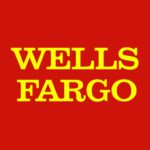Pfizer Inc. (PFE) Stock Analysis
1. Company Overview
Pfizer Inc. is a global pharmaceutical corporation founded in 1849 and headquartered in New York City. The company discovers, develops, manufactures, and markets biopharmaceutical products worldwide, focusing on diverse therapeutic areas:
- Cardiovascular and Metabolic Diseases: Products like Eliquis for preventing blood clots.
- Vaccines: Including the Prevnar family for pneumococcal disease and Comirnaty, the COVID-19 vaccine developed in partnership with BioNTech SE.
- Oncology: Medications such as Ibrance and Xtandi for cancer treatment.
- Inflammation and Immunology: Drugs like Xeljanz and Enbrel for autoimmune diseases.
- Rare Diseases: Treatments like the Vyndaqel family for transthyretin amyloid cardiomyopathy.
Pfizer collaborates with other pharmaceutical companies and biotech firms, including strategic partnerships with BioNTech SE for mRNA vaccine development and Astellas Pharma US, Inc. for oncology products. Its broad portfolio and global reach position Pfizer as a significant player in the healthcare industry.
2. Financial Performance
a. Revenue and Growth
- Trailing Twelve Months (TTM) Revenue: $63.63 Billion
- Year-over-Year (YoY) Revenue Growth: 8.77%
Analysis:
Pfizer’s revenue soared during the pandemic era, driven primarily by its COVID-19 vaccine (Comirnaty) and antiviral (Paxlovid). Recent data shows a mixed picture: after a significant post-peak decline, TTM revenue now reflects an 8.77% YoY increase, suggesting partial recovery or stabilization. Nonetheless, overall sales remain below pandemic highs, and the market is closely watching Pfizer’s ability to sustain growth from non-COVID products.
b. Profitability
- Net Income (TTM): $8.03 Billion
- Earnings Per Share (TTM): $1.41
- Profit Margin: 12.62%
- Return on Equity (ROE): 8.85%
- Return on Invested Capital (ROIC): 6.28%
Analysis:
Pfizer remains profitable, with a 12.62% profit margin and an ROE under 9%. Though profitability has normalized from peak pandemic levels, margins indicate a healthy core business. The ROIC at 6.28% is modest but aligns with typical large-cap pharmaceutical benchmarks. Investors will watch for improvement in these metrics as Pfizer shifts focus to its non-COVID pipeline.
c. Cash Flow
- Operating Cash Flow (TTM): Not explicitly reported here
- Free Cash Flow (TTM): Not explicitly reported here
- FCF Per Share: Not available
- FCF Margin: Not available
Analysis:
Specific TTM operating and free cash flow figures are not provided in detail, but historically, Pfizer has generated strong cash flows to support R&D, dividends, and acquisitions. Investors should monitor upcoming quarters to see how reduced COVID-19 revenue impacts free cash flow generation.
d. Balance Sheet
- Total Assets: Not explicitly stated in final TTM
- Total Debt: $67.95 Billion
- Cash & Cash Equivalents: $9.95 Billion
- Net Cash Position: -$57.99 Billion (i.e., net debt)
- Book Value Per Share: $16.29
- Debt / Equity: 0.73
Analysis:
Pfizer’s net debt of approximately $58 billion indicates a heavily leveraged balance sheet relative to its cash holdings. A debt-to-equity ratio of 0.73 suggests moderate leverage. Despite the high nominal debt, Pfizer’s large-scale operations and historically robust cash flows help manage these obligations, though investors will want to see debt levels moderate as COVID-19 windfalls subside.
3. Valuation
- Market Cap: $144.68 Billion
- Enterprise Value (EV): $202.67 Billion
- PE Ratio (TTM): 18.11
- Forward PE: 8.64
- PS Ratio: 2.27
- PB Ratio: 1.57
- PEG Ratio: 3.37
- Dividend Yield: 6.74%
Analysis:
- PE Ratios: A TTM PE of 18.11 is near market averages for a stable pharma, while the forward PE of 8.64 indicates analyst expectations of improved earnings.
- PS Ratio: 2.27 suggests the stock is priced at roughly twice its annual sales per share.
- PEG Ratio: 3.37 implies the stock is trading at a higher multiple relative to its projected earnings growth.
- Dividend Yield: 6.74% is notably high, signaling strong shareholder returns but also raising questions about sustainability if earnings remain subdued.
Overall, Pfizer’s valuation is somewhat mixed. The forward PE is attractive, but the high PEG ratio and net debt level call for caution.
4. Market Performance
- Current Stock Price: $25.53 (approx.)
- 52-Week Range: $24.48 – $31.54
- 52-Week Price Change: -5.34%
- Beta: 0.57
- Average Volume (20 Days): 32,681,900
- Relative Strength Index (RSI): 41.88
Analysis:
Pfizer’s share price is down about 5% over the last year, underperforming broader indices. A beta of 0.57 indicates lower volatility, which might appeal to more risk-averse investors. The RSI near 42 suggests the stock is not in overbought or oversold territory, reflecting market uncertainty about Pfizer’s post-COVID revenue streams.
5. Financial Health and Risks
a. Liquidity & Leverage
- Current Ratio: Not explicitly reported
- Debt / Equity: 0.73
- Net Debt: $57.99 Billion
Analysis:
Pfizer’s leverage is moderate. While the net debt is substantial, the company’s scale and historical cash flow generation provide some comfort. Still, rising interest rates and uncertain revenue from COVID-19 products remain considerations.
b. Operational Risks
- COVID-19 Product Reliance: Comirnaty and Paxlovid once drove significant revenue. With pandemic-related demand declining, Pfizer must rely on other pipeline and in-market drugs to fill the gap.
- R&D Uncertainty: Large R&D budgets do not guarantee successful product approvals or commercial success.
- Patent Cliffs: Upcoming patent expirations could expose key drugs to generic competition, pressuring revenue.
c. Regulatory & Market Risks
- Regulatory Environment: Pricing pressures and government scrutiny on drug costs can affect margins.
- Competition: Fierce competition from other pharma/biotech firms can erode market share.
- Litigation: As with all major pharmas, legal challenges (e.g., product liability, patent disputes) can arise.
d. Dividend Sustainability
- Dividend Payout Ratio: 121.82% (TTM)
- Dividend Growth (YoY): 2.42%
- Years of Dividend Growth: 10
Analysis:
A payout ratio above 100% is typically unsustainable long-term if earnings do not rebound. Pfizer has a strong dividend history, but management must balance R&D investments, debt obligations, and capital returns.
6. Conclusion
Pros
1. Diverse Product Portfolio: Pfizer’s broad range of products across oncology, vaccines, cardiovascular, and rare diseases reduces single-product dependency.
2. Robust R&D Pipeline: Continued investment in innovative therapeutics, with potential upside from new launches or acquisitions.
3. High Dividend Yield: At 6.74%, Pfizer offers attractive income potential for yield-focused investors.
Cons
1. Post-Pandemic Revenue Decline: Significant COVID-19 product sales drop challenges top-line growth.
2. Debt & Leverage: Net debt near $58B and a rising interest-rate environment warrant caution.
3. Patent & Regulatory Risks: Future growth depends on pipeline success and navigating complex global regulations.
4. Elevated Payout Ratio: The current dividend payout may be difficult to sustain if earnings do not improve.
Final Note
Pfizer faces a transitional period as pandemic-related revenue wanes. While the company’s large-scale R&D capabilities, diversified portfolio, and robust pipeline provide optimism, near-term earnings headwinds remain. The stock’s high dividend yield and forward PE ratio may attract value and income investors, but it’s essential to monitor pipeline developments, debt management, and cost control for a clearer picture of Pfizer’s long-term trajectory.
Disclaimer: This analysis is for informational purposes only and does not constitute financial advice. Investors should perform their own due diligence or consult a financial professional before making investment decisions.






